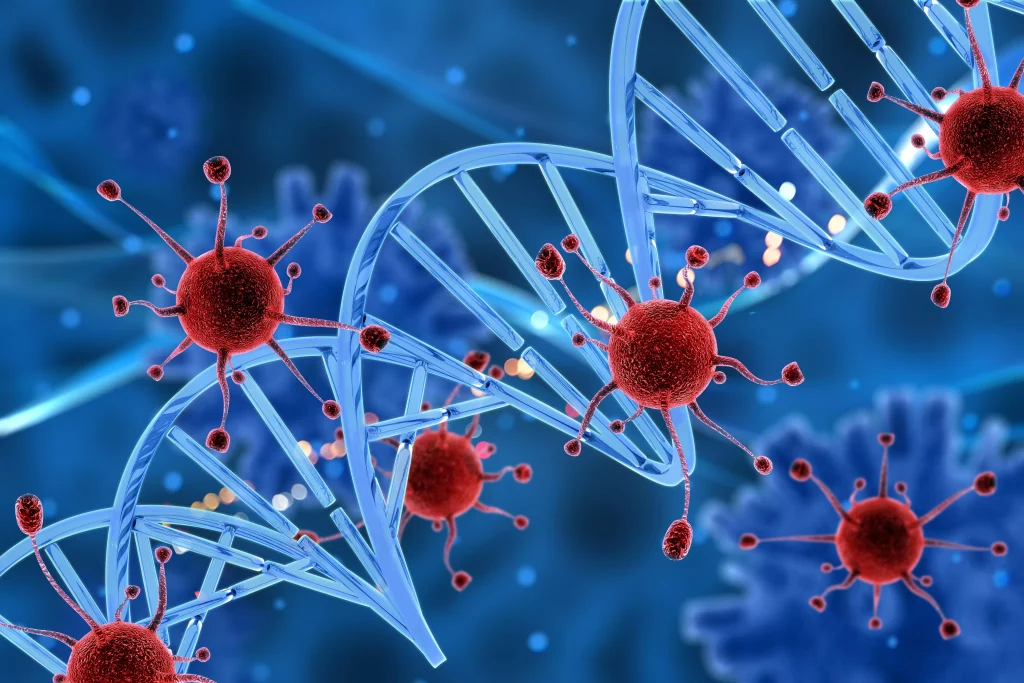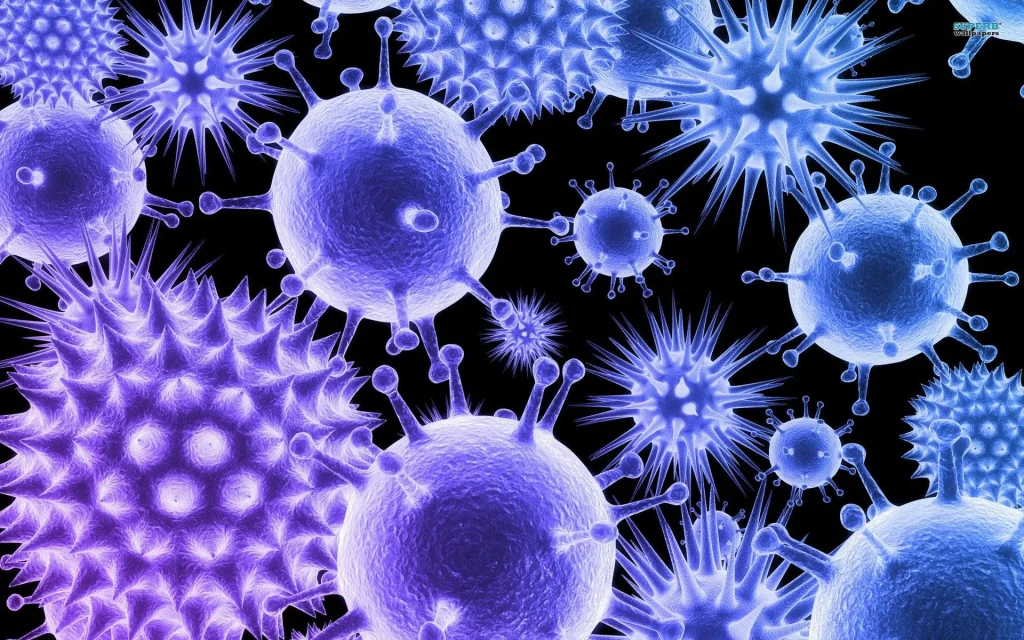Can viruses be alive? But how? Viruses are infectious, obligate intracellular parasites that contain DNA or RNA. They need a host cell to actively use this genetic material and metabolism. Therefore, whether they are alive or not has always been a matter of debate. In the host cell, they can map their genetic material and accordingly synthesize some proteins they need. Their size is usually expressed in nanometers (10-9). Leaving aside the general characteristics of viruses, the main question is whether to consider viruses as living or non-living?
General characteristics of viruses
When we look at the external structure of viruses, we usually encounter a sheath covered with protein and this is called the capsid. The cells that make up this structure are called capsomeres and the polypeptide chain subunits that make up capsomeres are called protomers. The polypeptides in the viral capsid do not show diversity because they require little genetic information. They do not produce any enzymes, but they have enzymes to dissolve the membrane of the cells they will enter. When we look at their morphology, we see that they have different shapes. Here are a few of them;
In addition to the capsid, some viruses have an envelope structure. Such viruses are more harmful than enveloped ones. Because they spread easily. In enveloped viruses, proteins from the host cell can be stored in the area between the envelope and the capsid. The genome of viruses usually consists of a small number of genes. In small viruses, this number can be 3-4 genes, while in some large viruses this number can reach 200-300 genes.

Why can’t we identify viruses as living or non-living?
When we look at the definition of viruses, we say that they are obligatory intracellular parasites, so we can say that they are inanimate unless they enter a cell. However, when we look at the activities it shows when it enters the cell, you will not be mistaken if you say it is alive. When we look at the conditions of vitality, we see the following items;
• Having metabolic activity
• Reacting to stimuli
• Reproduction, growth and development
• Adaptability
• Maintaining internal balance (homeostasis)
• Having a specific organization.
Viruses only begin to meet these conditions when they enter the host cell. When viruses enter the host cell, they begin to use the genetic material of the cell for their own metabolic activities. In this way, it can produce its own proteins as well as another protein that is desired to be produced with genetic engineering studies. It can also replicate its own genome within the host cell. They copy their own genome by going through the stages of replication, transcription and translation, which we know as central dogma. The enzymes and energy needed during this process are supplied from the host cell. The enzymes needed also vary according to the structure of the virus. For example, DNA polymerase performs the process called replication in DNA viruses, while reverse transcriptase takes over this task in RNA viruses.
You may be interested in: Scientists discover a new virus at Earth’s deepest point

Here I am going to talk about something else that confuses scientists and science lovers, the term “VIROFAGE”. You have all heard of the term phage. Phage is the name given to viruses that infect another living thing. If this virus infects bacteria, it is called “bacteriophage”. But can phages infect viruses?
Yes, phages can also infect viruses and are called “virophages” . The concept of virophage first emerged with the discovery of Acanthamoeba polyphaga mimivirus (APMV) , which is at least 3 times larger than any known virus and even larger than some bacteria. “It crossed our imaginary boundary between viruses and cellular organisms,” scientists said of this discovery. After this discovery, scientists isolated a virus called Sputnik (a mimivirus-dependent type of virus) from a human sample in 2008. This virus uses the reproductive mechanism of the helper virus and prevents it from replicating.
Viruses can be alive! But how?
Viruses can be alive! Yes, you heard that right. In 2015, researchers published an analysis supporting the idea that viruses are living organisms with a long evolutionary connection to cells. This study provides a reliable method to trace viral evolution back to a time before their recognizable form coexisted with cells.
The researchers point out the difficulty of classifying viruses, for which the International Committee on Taxonomy of Viruses recognizes seven viral orders based on various characteristics. However, only a fraction of viral families have been identified and many evolutionary relationships remain unclear.
The diversity and abundance of viruses contribute to this confusion; despite potentially millions of viral species, only a small fraction have been sequenced. Ranging in size from very small to gigantic, viruses contain minimal genetic material compared to other microbes, creating difficulties in studying their evolution.
You may be interested in: CRISPR gene editing technology is developing a cure for AIDS!
The study focuses on protein structures or “folds” encoded in both cellular and viral genomes. By comparing these structures across different branches of the evolutionary tree, researchers can reconstruct the histories of both the folds and the organisms that harbor them. This approach is preferred over analyzing genetic sequences because of the ability of folds to retain evolutionary signals despite genetic mutation.
Viruses often hijack the host cell machinery for replication and can integrate their genetic material into host DNA, a phenomenon observed in a variety of organisms, including humans. This suggests that viruses play a fundamental role in the spread of genetic diversity.

Analyzing folds in more than 5,000 organisms, including viruses, the study identifies common and unique folds between cells and viruses. This sheds light on viral evolution and reinforces the history of viruses intertwined with cellular life.
Today, many viruses, some of them pathogenic, hijack the protein synthesis machinery in host cells to replicate themselves and facilitate their spread to other cells. Viruses frequently integrate their genetic material into the DNA of their hosts; this process has left persistent traces of ancient viral interactions in the genomes of most cellular organisms, including humans. Gustavo Caetano-Anollés suggests that the ability to manipulate genetic material underscores the fundamental role of viruses as agents driving genetic diversity.
To uncover the evolutionary links between viruses and cellular life, the researchers examined all recognized protein folds in a wide range of 5,080 organisms spanning every branch of the evolutionary tree, including 3,460 viruses. Using advanced bioinformatics techniques, they distinguished 66 folds unique to viruses, as well as 442 protein folds common to both cells and viruses.
“This discovery shows that, given the abundance of features in viruses that parallel those found in cells, it is possible to build a comprehensive tree of life,” says Caetano-Anollés. Viruses have unique components in addition to those shared with cells.”
Indeed, the analysis revealed genetic sequences within viruses that differ significantly from their cellular counterparts, challenging the hypothesis that viruses get their genetic material exclusively from cells. Using protein folding data from online repositories, Nasir and Caetano-Anollés used computational techniques to create inclusive trees of life that included viruses.
The data showed that “viruses originated from multiple ancient cells… and co-existed with the ancestors of modern cells,” the researchers said. These ancient cells likely harbored compartmentalized RNA genomes, Caetano-Anollés added.
The data also show that early in their evolutionary trajectory, viruses developed the ability to encapsulate themselves in protein folds that provide protection for their genetic material and facilitate transmission outside host cells. Among the unique protein folds unique to viruses are those that form these viral “capsids” .
Referanslar:
1. Villarreal L. P. (2004). Are viruses alive?. Scientific American, 291(6), 100–105. https://doi.org/10.1038/scientificamerican1204-100
2. Pearson H. (2008). 'Virophage' suggests viruses are alive. Nature, 454(7205), 677. https://doi.org/10.1038/454677a
3. Yates, D., & Yates, D. (n.d.). Study adds to evidence that viruses are alive. https://news.illinois.edu/view/6367/250879



Leave a Reply